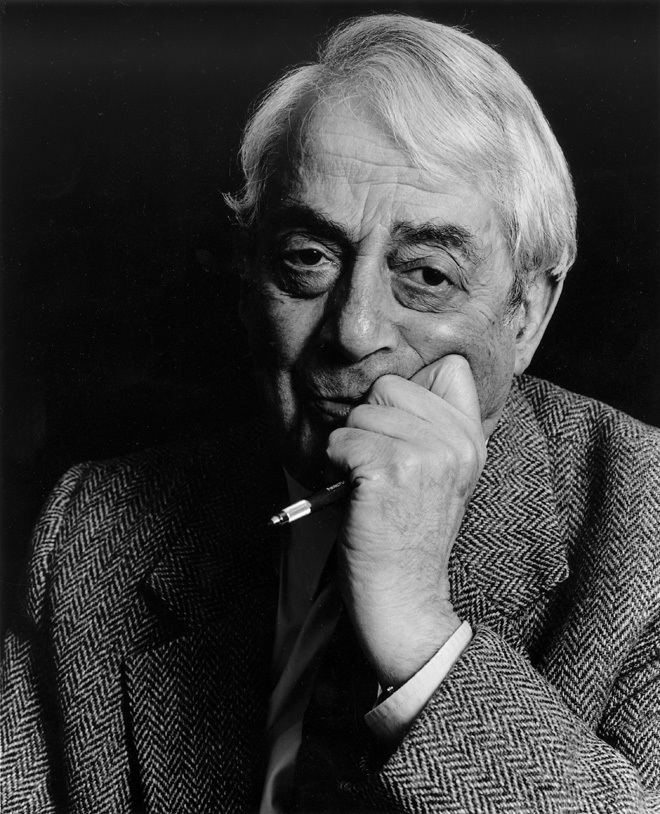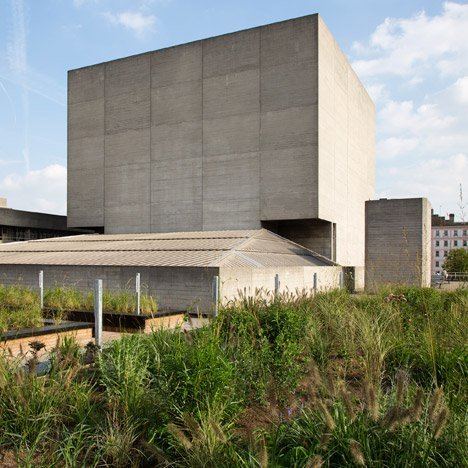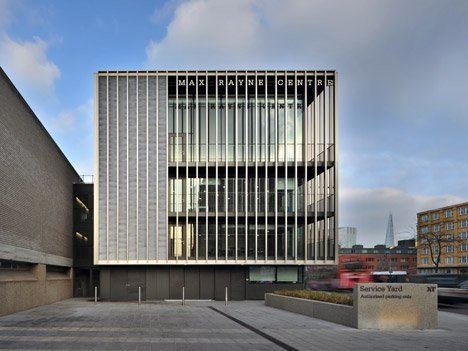Name Denys Lasdun Children James Lasdun | Role Architect | |
Structures Similar People Berthold Lubetkin, James Lasdun, Auguste Perret, Francis Skinner, Vladimir Tatlin | ||
The anatomy of a building denys lasdun and the royal college of physicians
Sir Denys Louis Lasdun, CH (8 September 1914–11 January 2001) was an eminent architect, the son of Nathan Lasdun 1879-1920, and Julie [nee Abrahams]1884-1963. Probably his best known work is the Royal National Theatre, on London's South Bank of the Thames, which is a Grade II* listed building and one of the most notable examples of Brutalist design in the United Kingdom.
Contents
- The anatomy of a building denys lasdun and the royal college of physicians
- Denys lasdun an architect out of touch with reality
- Early work
- University buildings
- Late work
- Projects
- References

Lasdun studied at the Architectural Association School of Architecture in London and was a junior in the practice of Wells Coates. Like other Modernist architects, including Sir Basil Spence and Peter and Alison Smithson, Lasdun was much influenced by Le Corbusier and Ludwig Mies van der Rohe, but there was a gentler, more classical influence, too, from the likes of Nicholas Hawksmoor.

Lasdun's son is the author James Lasdun.
Denys lasdun an architect out of touch with reality
Early work

Before and after Second World War service in the army, Lasdun worked for a while with Berthold Lubetkin's Tecton practice, becoming a partner. In this period he also completed one private house in Paddington in Le Corbusier's style. After the war Lasdun worked with Lindsay Drake on the Hallfield Estate, which had been planned by Lubetkin and Tecton in a similar patterned, tightly planned idiom to his Spa Green and Priory Green Estates. Lasdun's Hallfield School was the first clue to his mature style, in its use of bare concrete and angularity, as well as its more human scale.

In the 1950s he was a partner with Jane Drew, Maxwell Fry and Lindsay Drake, in Fry Drew Drake and Lasdun. His originality became more evident in his 'cluster blocks' in Bethnal Green. These were a response to the critique of much post-war development for creating an isolating environment and discouraging community. The cluster blocks grouped flats around a central tower, and tenants were intended to be able to pick out their own flats in the structure. The earlier blocks at Usk Street of 1954 were medium-sized, while the later block, Keeling House is high-rise. Keeling House was sold to a private developer by Tower Hamlets council, and is now a block of luxury flats. Lasdun made an excursion into private housing in 1958, with his St James' Flats, the plan of which was partly derived from social housing models such as the Narkomfin Building.
University buildings
Elements of Lasdun's most famous style, which combined cubic towers, bare concrete and jutting foyers, which was compared by some to Frank Lloyd Wright, can be found in his first educational buildings, the Fitzwilliam College, Cambridge and the Royal College of Physicians in Regent's Park, the latter of which compared favourably to the surrounding buildings by John Nash. More extensive was his design for the University of East Anglia. This consisted of a series of classrooms and laboratories connected by walkways, and glazed residential quarters shaped like ziggurats. Following this acclaimed design Lasdun designed two buildings for the University of London, one for SOAS (1970) and another for the Institute of Education (1970–1976), which was particularly controversial in its insertion into the previous street plan of squares and terraces, which it tried to replicate in a more Brutalist manner. The expressed staircases make references to Wells Coates and Louis Kahn and Lasdun's masterplanning created a new public square. The building is now listed Grade II*.
Late work
The most famous and disputed of the architect's work is his Royal National Theatre on London's South Bank. Prince Charles compared it to a nuclear power station but it was popular with other traditionalists, with John Betjeman writing Lasdun a letter in praise of its design. Lasdun (or his firm Lasdun, Softley and Partners) designed the neighbouring IBM headquarters (finished 1985) as a continuity with the theatre. His European Investment Bank in Luxembourg was similar. The last work produced by the firm in London was an office block called Milton Gate near the Barbican Estate, which in its use of green-tinted glazing represented a departure from his familiar bare concrete style.
Lasdun was awarded the RIBA Royal Gold Medal in 1977. His drawings and papers are available for consultation at the RIBA Drawings & Archives Collections. Despite the controversy of much of his work, most of Lasdun's surviving buildings are listed, although his 1958 Peter Robinson department store on London's Strand was demolished in the 1990s.
Lasdun died on 11 January 2001 aged 86.
